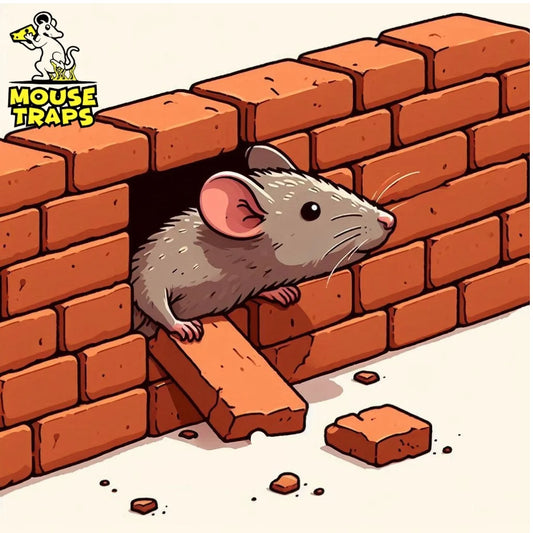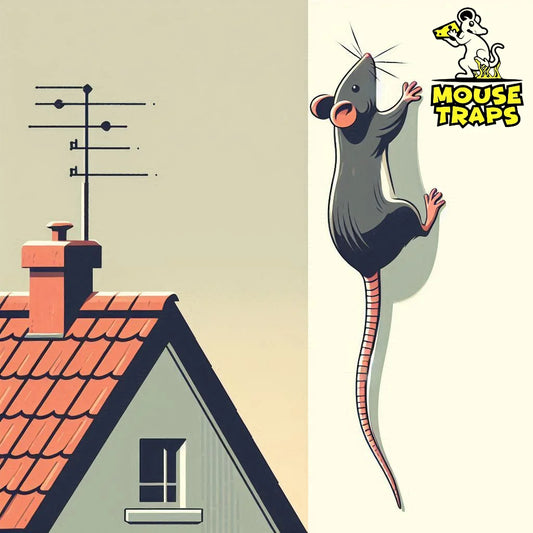Introduction:
Dealing with a rat infestation can be a frustrating and unsanitary problem for homeowners. These annoying creatures have a knack, for finding their way into your home through openings wreaking havoc and spreading diseases. No need to worry! We've got you covered with a guide, on finding and sealing any openings to prevent those rats from entering your living area. Lets get started.
Methods Of Inspection:
-
Inspect Your Property: Start by inspecting both the inside and outside of your house. Keep an eye out for any openings, gaps or crevices that rats might be able to use to get in. Pay close attention to areas around pipes, vents, doors, windows, and holes in walls or foundations.

-
Seal Exterior Entry Points: Using materials like steel wool, metal mesh, caulk, or expanding foam insulation, seal any exterior entry points you find. It's essential to use durable materials that rats cannot easily chew through.
-
Repair Damaged Areas: Repair any damaged sections of your home's exterior, such as loose siding or roofing, as these can provide easy access for rats.
-
Trim Vegetation: Keep trees, bushes, and shrubs near your home trimmed back. Rats can use overhanging branches or dense vegetation as a bridge to access your house.

-
Secure Doors and Windows: Install door sweeps and weather stripping to seal gaps under doors and around windows. Make sure doors and windows close tightly, and repair any damage to screens.
-
Inspect Utility Openings: Check for openings around utility lines, such as gas, water, and electrical lines. Seal any gaps with appropriate materials, ensuring you do not interfere with their proper functioning.
-
Check Attic and Basement: Inspect your attic and basement for signs of rat activity and entry points. Seal any gaps in the walls, floors, or ceilings that could provide access to rats.

-
Maintain Cleanliness: Keep your home clean and free of clutter to remove potential food sources and hiding places for rats. Store food in sealed containers, clean up spills promptly, and dispose of garbage regularly.

-
Monitor Regularly: After sealing entry points, continue to monitor your home for signs of rat activity. Check for new entry points or evidence of rats, such as droppings, gnaw marks, or nests.
Note:
If somehow rats finds out a way to enter in your house then you should use traps to deal with them and these two traps are the best choice among all other traps.
1-Live Mouse Traps:
A live humane trap is designed to capture rodents without harming them. These traps typically consist of a cage or box with a trigger mechanism that closes the door once the rat enters.
Click Here To Buy Live Traps

Benefits of Live Mouse Traps:
- Humanely captures mice without harming them.
- Allows for the release of captured mice back into the wild.
- Safe to use around children and pets since they do not contain harmful chemicals.
2-Sticky Glue Traps:
Sticky glue traps are flat surfaces coated with a strong adhesive. When a rat steps onto the trap, it becomes stuck and unable to escape.
Click Here To Buy Sticky Pad Traps

Benefits of Sticky Glue Traps:
- Easy to set up and use.
- Effective in catching mice quickly.
- No need to handle live mice, reducing the risk of bites or exposure to diseases.
- Can be placed in tight spaces where traditional traps may not fit.
Conclusion:
By following these instructions and putting in the effort you can successfully locate and seal the areas where rats can enter your house. Ensure the safety of your home, from these pests. If the infestation persists or worsens, consider seeking assistance from professional pest control services to address the issue comprehensively or use the trap we mentioned. It's an idea to be proactive and take steps to protect yourself from future issues both in terms of time and finances. By addressing issues of time you can avoid unnecessary frustration, down the road.




